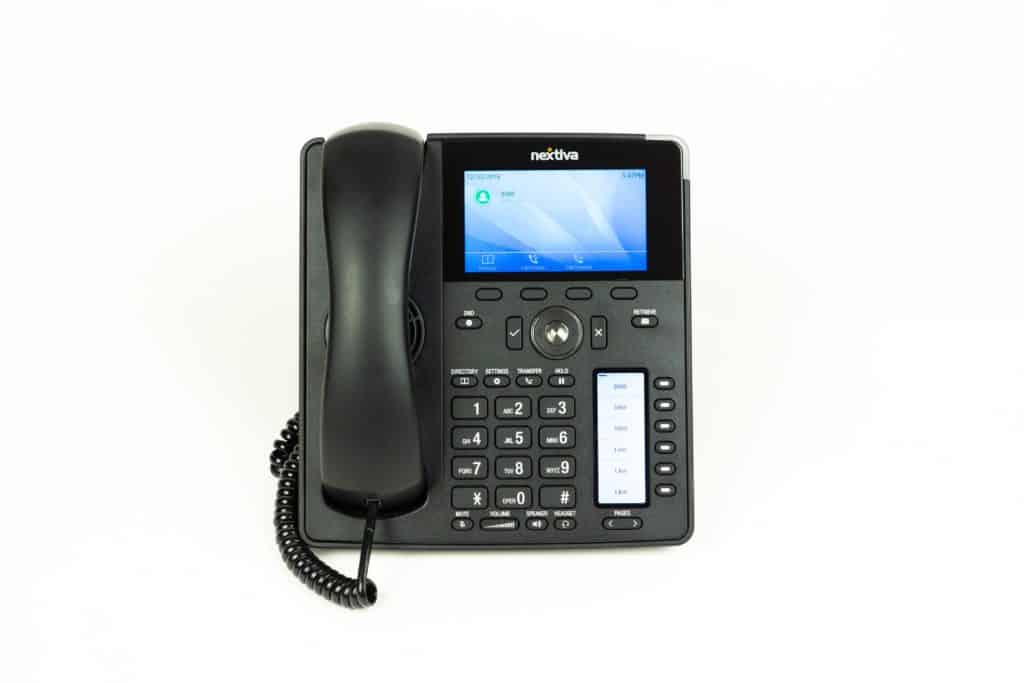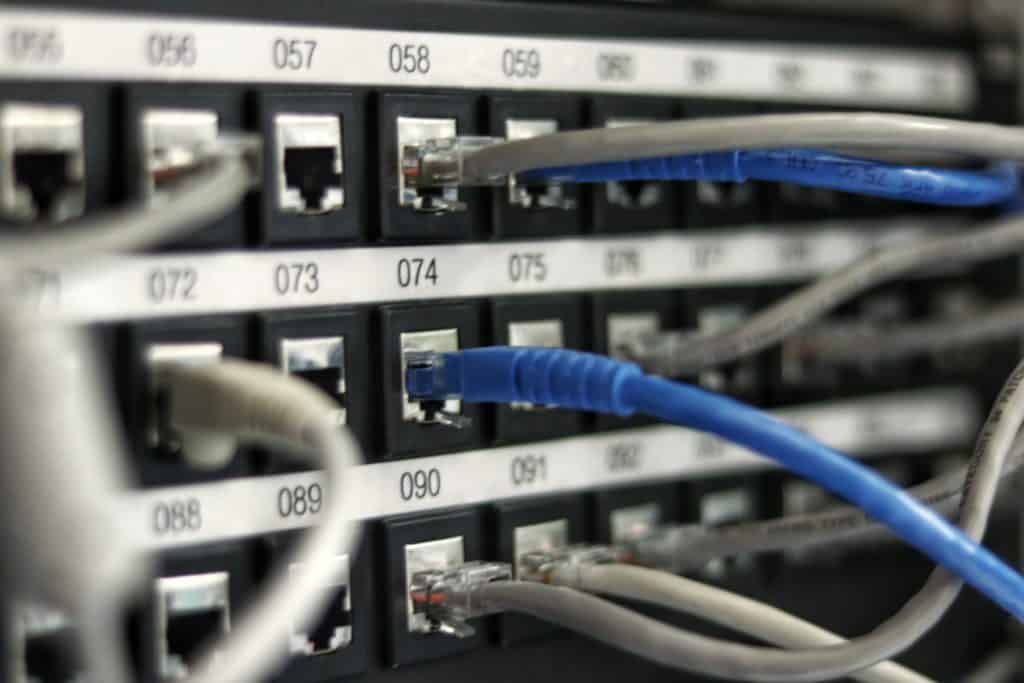DID numbers
DID (Direct Inward Dialing) numbers are regular phone numbers. The term was originally used to describe how phone numbers could be used to connect calls to your personal desktop phone via an on-premise company phone switch (PBX). Today, “DID numbers” has become a term that refers to any phone numbers that can be purchased online.
In this article we will explain the old and current definition of DID numbers. We will also go through how you can get a DID number.
What DID numbers used to mean
In the old classical work set-up, office workers had their own physical desktop phone.
Each phone had an internal phone number (extension number) enabling internal calls between employees at the same office. Each phone was wired with copper cables to a central on-premise phone switch (also known as a PBX or “Private Branch Exchange”). In later versions, the PBX would instead use the regular computer network (LAN) to connect calls to the desktop phones.
The company telephone switch (PBX) was connected to the outside world and the classical phone network (PSTN) via digital or analogue phone lines.
Many numbers sharing few phone lines
Instead of having a dedicated phone line from the phone company for each phone number, the company would instead just buy as many phone lines as they needed for the max amount of concurrent calls. This negated the need for the company to buy an expensive phone line for each employee. The phone lines could instead be used as a shared resource for all incoming and outgoing calls from the office.
It also negated the need for outside callers to first be connected to an operator at the company, or to an auto attendant, before being connected onwards to the person they wanted to call.
A company with 150 employees – all with their dedicated desktop phone and phone number – could thereby share 30 incoming phone lines/channels.
This was made possible by “DID numbers”.
How it actually worked
When the phone company received an incoming call to a company, it would first signal to the company on-premise switch (PBX) which phone number the incoming call was for – before starting to ring. The company (PBX) would then check which desktop phone the called number was assigned to, and make that phone ring.
The DID numbers thereby enabled “Direct Inward Dialing” via the PBX, to the right desktop phone and to the right person.
How DID numbers came to mean something else
The emergence of Internet Telephony allowed calls from the classic telephone network to be converted into digital formats. This was done by breaking down audio and signaling into small packets of data, which could travel across the Internet, just as any other type of data. A popular standard for Internet Telephony was SIP (Session Initiation Protocol).
This development opened up for significantly more flexible solutions for handling calls. Free open source software in computers could now handle tasks that used to require expensive, proprietary on-premise equipment.
Local phone companies started to handle the conversion of calls from the old telephone network (PSTN) to Internet telephony on their side. This negated the need for you to have classic copper phone lines connected to your office.
Calls to and from your company could now simply be connected via your regular Internet connection.
On premise equipment no longer needed
The functions of the old company phone switch (PBX) can now be produced for you anywhere on the planet.
You can get it from the phone company delivering the phone numbers – as an add-on-service. Another way to solve it is for you to install software on a computer at your company’s office, or in a server that you rent in the cloud. It is also possible for you to get the functionality as Software-As-A-Service from some third party provider.
Calls connected across the Internet doesn’t really cost anything to connect. This means that the geographic location of the phone company, the PBX software and the employee answering the call – is less of an issue.
What DID numbers mean today
Companies no longer need to buy an on-premise phone switch – for which the “DID numbers” were invented. The term “DID numbers” has nevertheless lived on.
Today “DID numbers” simply means phone numbers that you can buy online and connect to your company across the Internet.
“DID numbers” has become a synonym for “Virtual numbers” or “Cloud Numbers”.
DID numbers that you buy, can connect incoming calls across the Internet to anywhere. Calls can be connected to physical desktop phones that use the SIP Internet telephony standard. They can also be connected to open source software switches, such as Asterisk. This does however require deep technical skills, and is fraught with many obstacles related to firewalls and all their secretive functions such as NATs (Network Address Translation) and ALGs (Application Level Gateways). Last mile issues with Internet connection quality can also create havoc for the user experience.
Forward calls to regular mobiles and landlines
DID numbers can also be configured to forward incoming calls to regular phone numbers (landlines of mobile numbers). This is done by having a second outbound call set up across the old classic telephone network to the forwarding destination. The inbound call and outbound call are then bridged together by software on the Internet.
The user experience is seamless, just as if calling any regular phone number directly. The call quality is usually excellent.
This allows companies to have more flexibility as to where calls should be connected and when. It negates the need to have phone numbers hardwired to a specific office location.
How to get a DID number
There is a wide variety of providers of DID numbers available by country – offering services at a wide scale of prices and quality of service.
Sonetel offers business level quality DID numbers, with exceptionally competitive pricing.
You can try a DID number for free here.





